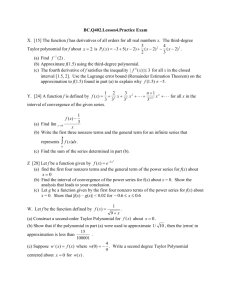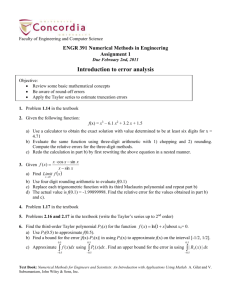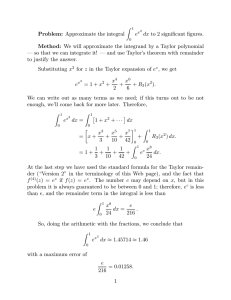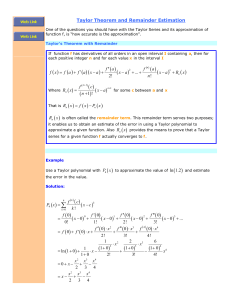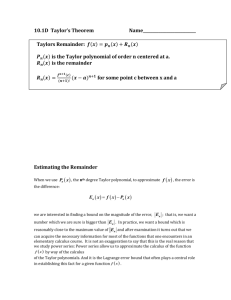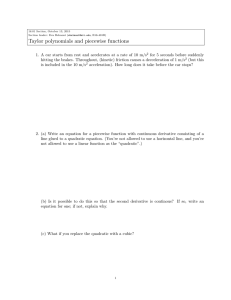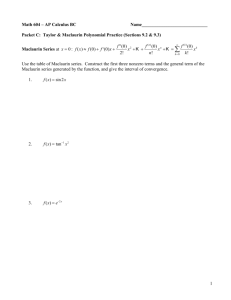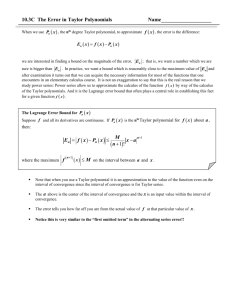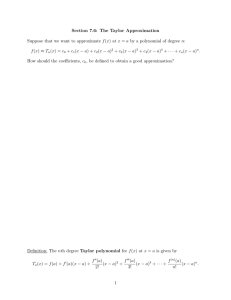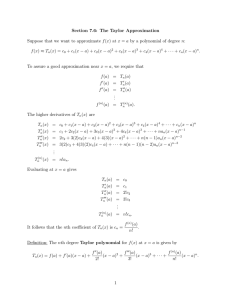1 10.9: Error Analysis in Taylor Polynomials
advertisement
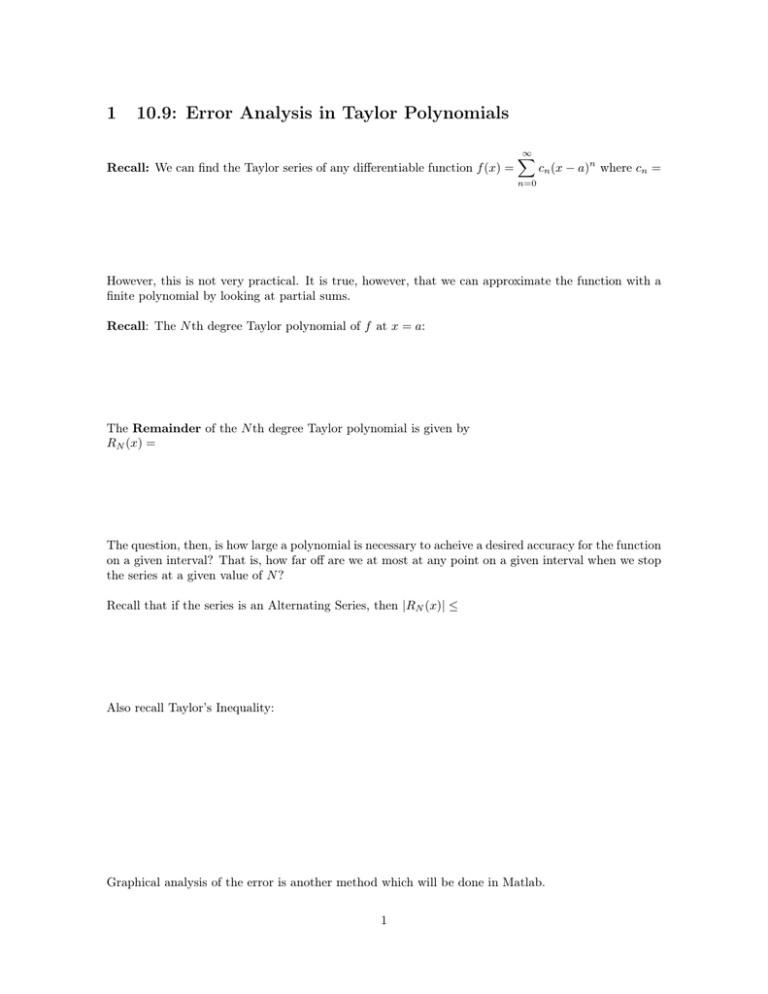
1 10.9: Error Analysis in Taylor Polynomials Recall: We can find the Taylor series of any differentiable function f (x) = ∞ X cn (x − a)n where cn = n=0 However, this is not very practical. It is true, however, that we can approximate the function with a finite polynomial by looking at partial sums. Recall: The N th degree Taylor polynomial of f at x = a: The Remainder of the N th degree Taylor polynomial is given by RN (x) = The question, then, is how large a polynomial is necessary to acheive a desired accuracy for the function on a given interval? That is, how far off are we at most at any point on a given interval when we stop the series at a given value of N ? Recall that if the series is an Alternating Series, then |RN (x)| ≤ Also recall Taylor’s Inequality: Graphical analysis of the error is another method which will be done in Matlab. 1 Examples: Use a 3rd degree Taylor polynomial at a = 0 to approximate ex on the interval [−1, 1] (which can then be used to approximate e) and determine the accuracy of your results using the remainder theorem. 1 1 Using the fact that ln(1+t) = t− t2 + t3 −· · · , find the 4th degree Taylor polynomial approximation 2 3 ˆ 1/2 ln(1 + x2 ) dx. Estimate the error in using this at a = 0 for ln(1 + x2 ). Using this, estimate approximation. 0 2 On Beyond Average: ˆ 0.1 sin(x2 ) dx to within 10−10 Determine the degree of the Taylor Polynomial needed to approximate 0 accuracy. (Calc required) In Einstein’s special theory of relativity, the relativistic generalization of the kinetic energy of an object is given by ! −1/2 v2 2 −1 K = mc 1− 2 c Here m is the object’s mass, c is the speed of light, and v is the speed of the object. Show that, for everyday speeds (i.e., whenever v is VERY MUCH LESS than c), the above expression reduces to the 1 classical kinetic energy of Newtonian theory, K = mv 2 : 2 (a) Compute the first 3 terms of the Maclaurin series for f (x) = (1 + x)−1/2 (b) Substitute x = − v2 into (a) to get an approximate series for c2 (c) Substitute (b) into the original expression 3 1− v2 c2 −1/2

